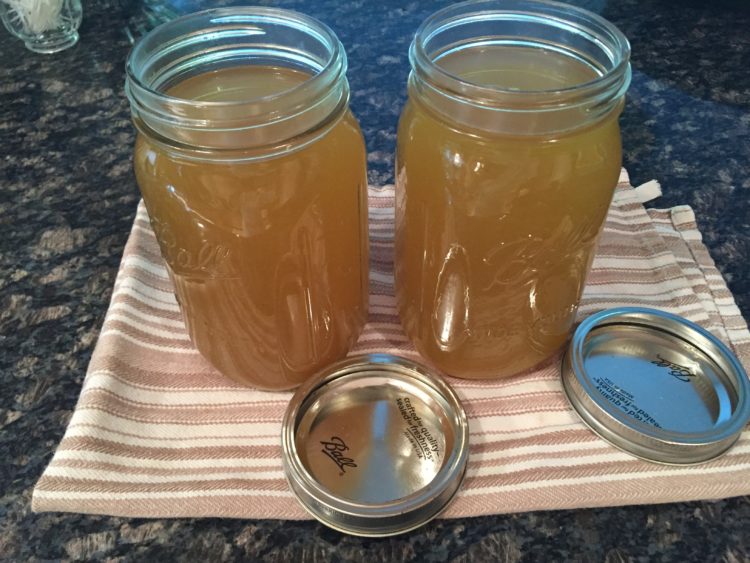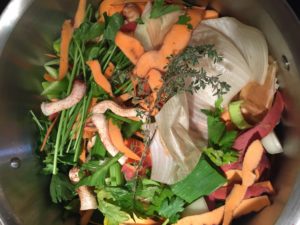Eating a healthy and nourishing diet doesn’t have to be expensive. If you are cooking on a regular basis using whole and real ingredients and vegetables are a big part of you meals, don’t overlook the value and nutritional benefits of those scraps. A very simple way to cut down on waste and food $$ is to start a scrap bucket.
Vegetable scraps and trimmings are the starting point for healthful and delicious vegetable stocks. Unlike purchased vegetable stock or vegetable bullion cubes, homemade stock is cost effective and has no sugar, fats, MSG or other unwanted additives & you can control the sodium content.
A few ideas and tips to get started;
Save your clean vegetable scraps when cooking and store in the refrigerator until you have enough to make a batch of stock. Alternately you can freeze scraps in freezer containers until you have enough to work with.
The Basic’s– start with 1 part carrots, 1 part celery and 2 parts Onion as the base for your stock for a well balanced flavor. Carrot tops, leaves and trimmings, celery trimmings and leaves and onions of all kinds; onion peelings, scallions, leeks (bottoms and green tops). If you don’t have enough trimmings for the base add in some fresh carrots, celery and onions to bulk it up.
Wash all trimmings before storing, no dirt or rotting/moldy produce please.
Don’t worry about how ingredients are cut, you’ll be straining them off.
Add in trimmings ; mushroom stems, zucchini /yellow squash trimmings, peels from sweet potato or yams, trimmings from potatoes, string bean trimmings, tomato scraps, romaine lettuce , scallions. parsley stems, fresh thyme , a few bay leaves or a piece of kombu.
Avoid strong smelling and over powering vegetable trimmings; Brussels sprouts, broccoli, cabbage, beets, turnips, fennel and corn cobs unless you are making a specific flavored stock to pair with something.
Fill a large stock pot with scraps, cover with clean filtered water, about 2″ over the top of vegetables. Add in your choice of seasonings; thyme, parsley, bay leaf, kombu and a few peppercorns. Add a pinch or two of salt during cooking. Do a final seasoning when adding stock to whatever you are cooking.
Bring stock to a boil and turn heat down to a simmer. Cook the stock for 50 minutes to 2 hours until vegetables are very soft. Strain stock through a fine mesh strainer, discard vegetables or add them to your compost. Divide stock into small containers or jars, chill or freeze as needed. Make sure to label and date your containers when storing.
Avoid overcooking. Vegetable stocks do not need to cook all day long. Overcooking can result in a dull flat taste and loss of nutrition.
Use vegetable stock to make soups, when cooking grains, for a quick sauce base, or serve warm in a mug for a warm and nourishing morning or afternoon pick me up.


